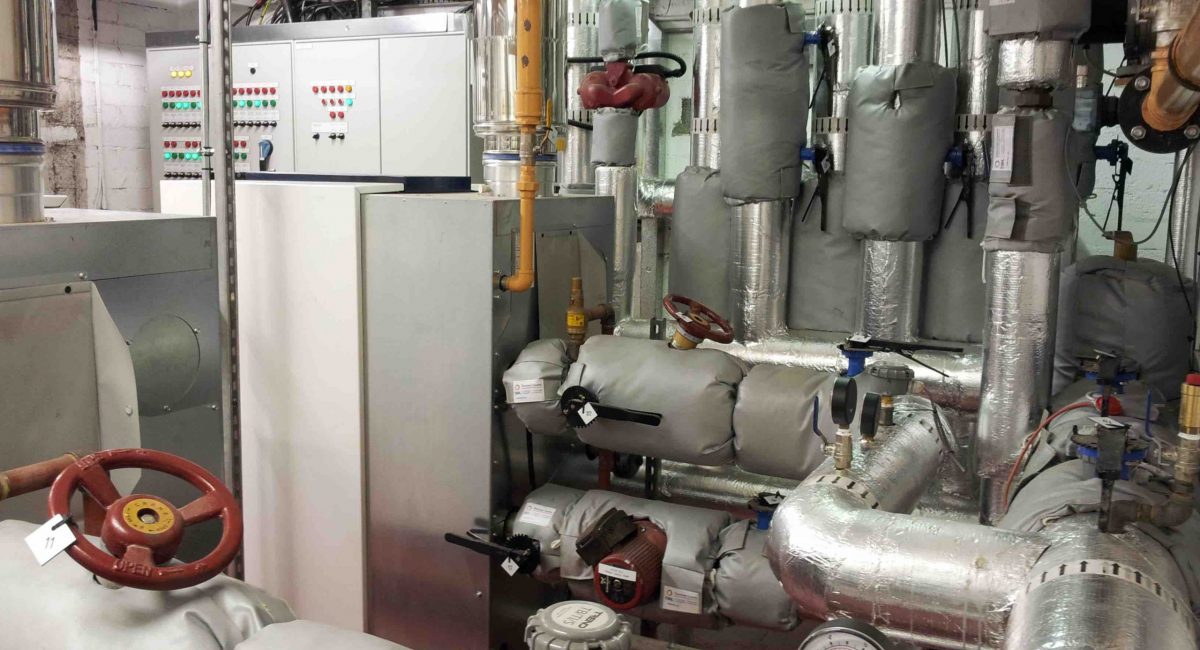Dublin Port Headquarters Energy Retrofit
Boiler House Refurbishment and Ventilation Controls Upgrade with Energy Performance Related Payments.
By Cian O’Riordan is Managing Director of PowerTherm Solutions
When Dublin Port’s Maintenance and Services Manager, Ciarán Callan, watched two more leaking boiler tubes being plugged in the 30 year old oil- red combi-boilers at the Port Centre offices in October 2011 he knew it was time for an upgrade. Oil prices were now almost twice that of gas and the existing installation was likely to be operating at less than 60% seasonal efficiency. Ciarán was aware that efficiencies in excess of 85% could be achieved with a modern condensing boiler installation and precisely engineered controls.
A solution for the control of the building’s Variable Air Volume (VAV) boxes, which regulate air flow from the Main Air Handling Unit (AHU) to the various office zones in the building, was also required. The VAV boxes were pneumatically controlled, but not regulating space temperatures satisfactorily and Ciarán was convinced they were highly inefficient.
Despite the challenging budgetary climate, if he could make a convincing case that the energy savings would pay for the works within a reasonable period of time, he would be in a position to secure the required capital funding. Ciarán contacted energy consultants PowerTherm Solutions and asked them to carry out a feasibility study.
“By incorporating an EPRP element into the contract, all members of the project team (client, consultant, and contractor) are invested in maximising the energy savings and the success of the project.”


Energy Performance Related Payments (EPRPs) are used in energy retrofit projects to provide a guarantee to the client that the anticipated energy savings will materialise. Two energy efficiency upgrade projects completed by Dublin Port Company employed EPRPs to incentivise the consultant and contractors to maximise the energy savings. Cian O’Riordan describes the projects and outlines the innovative payment approach employed.